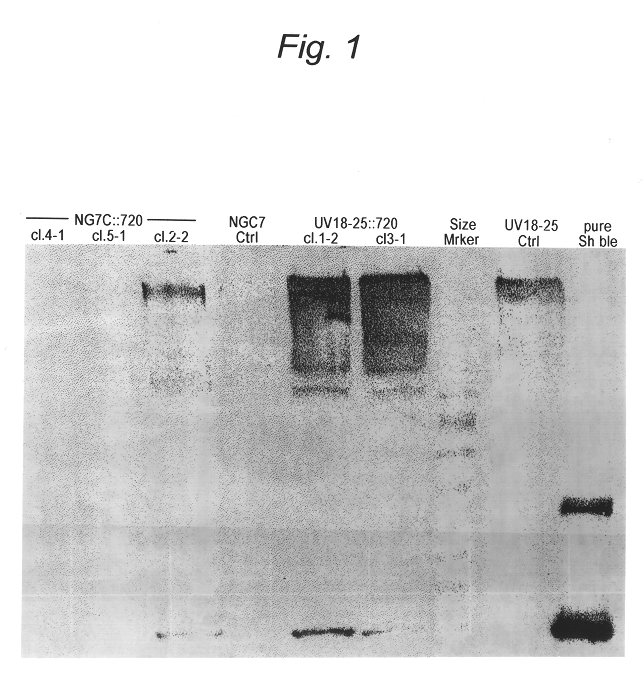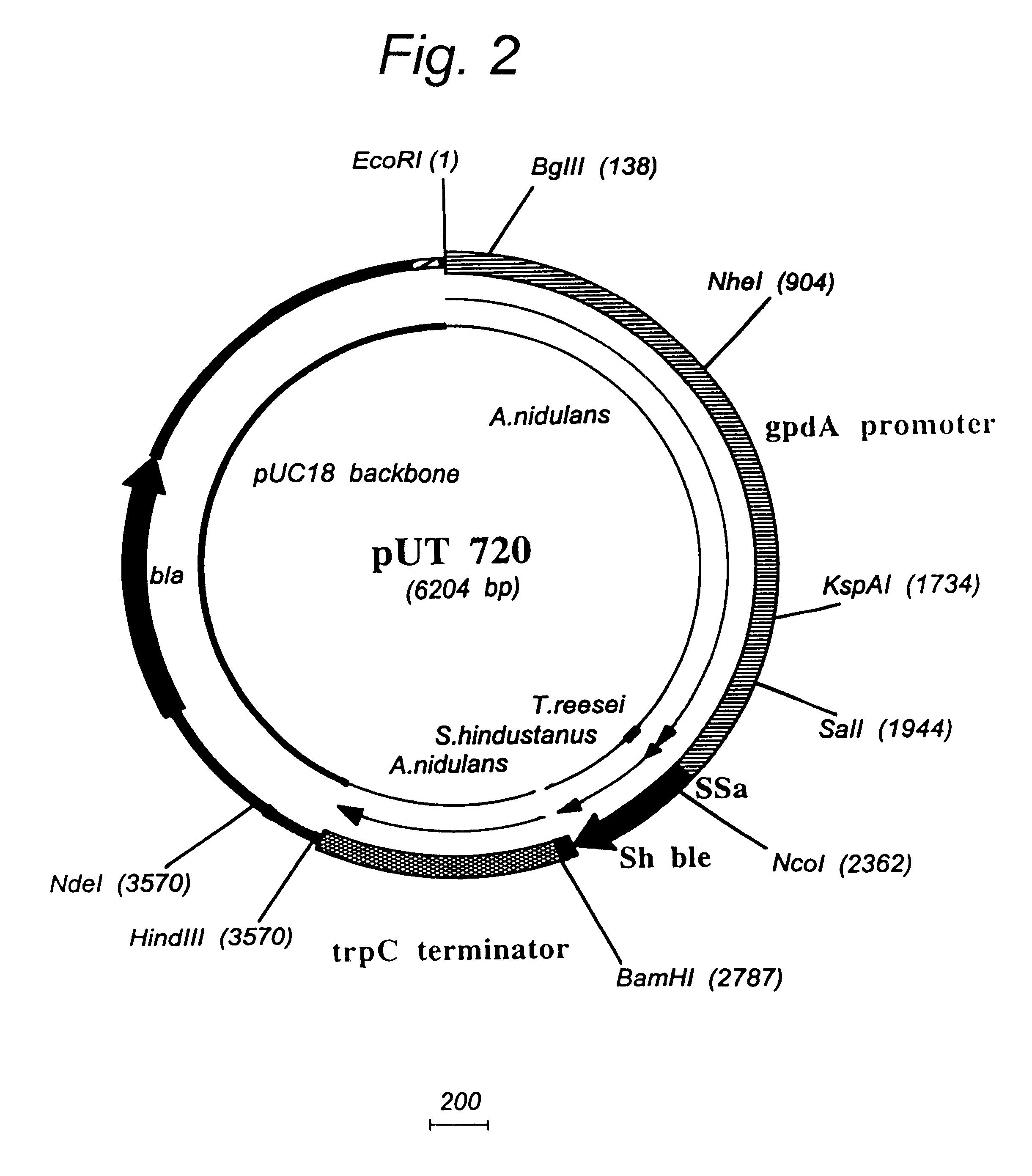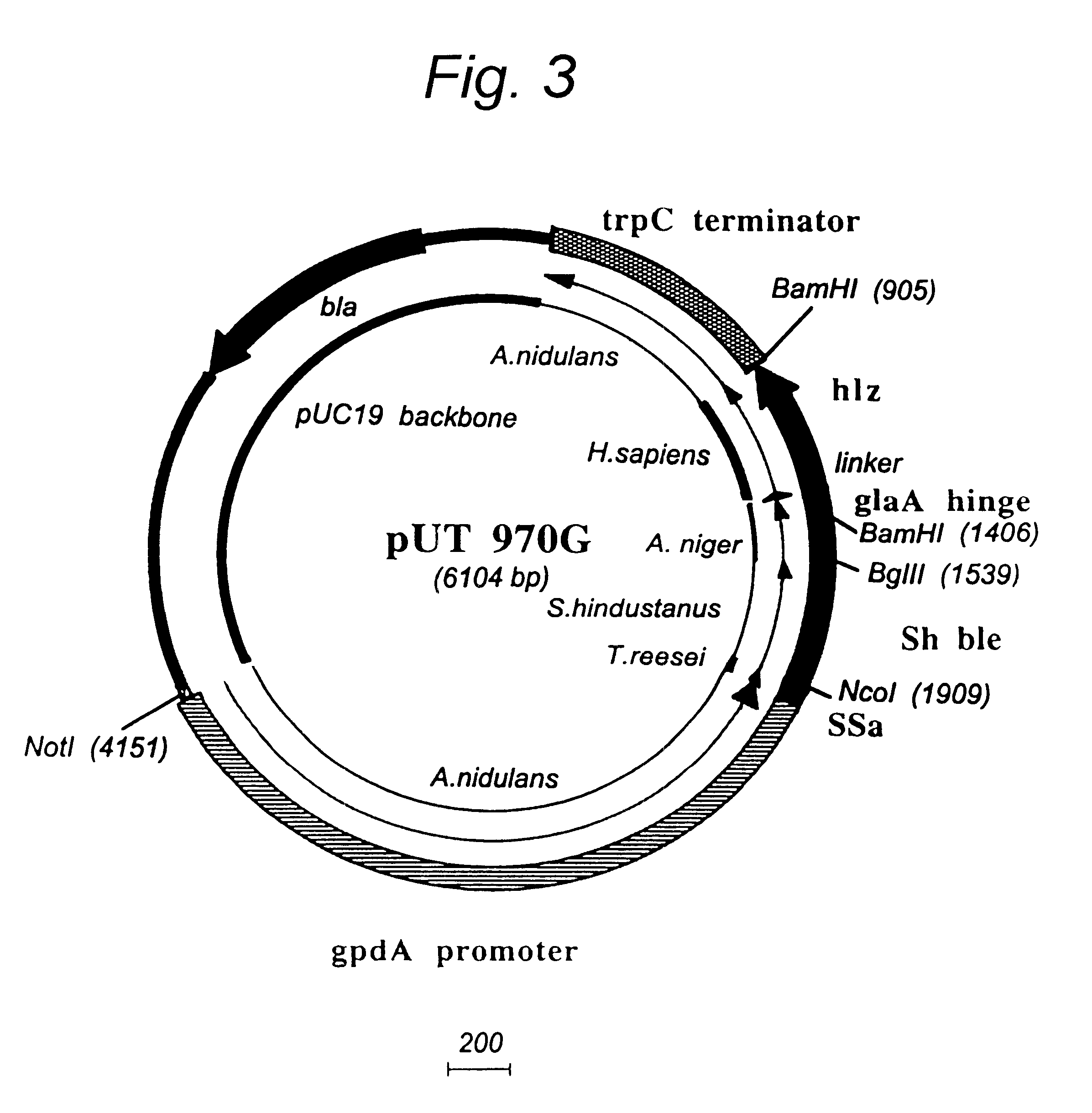Transformation system in the field of filamentous fungal hosts
- Summary
- Abstract
- Description
- Claims
- Application Information
AI Technical Summary
Benefits of technology
Problems solved by technology
Method used
Image
Examples
Embodiment Construction
Examples of Biomass and Viscosity Determinations
The following operating parameter data ranges have been determined for fungal fermentations using three different fungal organisms. The three fungal organisms compared are: Trichoderma longibrachiatum (formerly T. reesei), Aspergillus niger and Chrysosporium lucknowense (UV18-25).
Viscosity is determined on a Brookfield LVF viscometer using the small sample adapter and spindle number 31.
Turn the water-circulating pump on 5 minutes prior to viscometer use to equilibrate the waterjacket. The water bath temperature should be 30.degree. C.
Obtain a fresh sample of fermentation broth and place 10 ml of the broth in the small sample spindle. Select the spindle speed to give a reading in the range 10-80. Wait four (4) minutes and take the reading from the viscometer scale. Multiply the reading by the factor given below to get the viscosity in centipoise (cP).
The following viscosity ranges have been determined for fermentations using th...
PUM
| Property | Measurement | Unit |
|---|---|---|
| Fraction | aaaaa | aaaaa |
| Viscosity | aaaaa | aaaaa |
| Volume | aaaaa | aaaaa |
Abstract
Description
Claims
Application Information
 Login to View More
Login to View More - R&D
- Intellectual Property
- Life Sciences
- Materials
- Tech Scout
- Unparalleled Data Quality
- Higher Quality Content
- 60% Fewer Hallucinations
Browse by: Latest US Patents, China's latest patents, Technical Efficacy Thesaurus, Application Domain, Technology Topic, Popular Technical Reports.
© 2025 PatSnap. All rights reserved.Legal|Privacy policy|Modern Slavery Act Transparency Statement|Sitemap|About US| Contact US: help@patsnap.com



